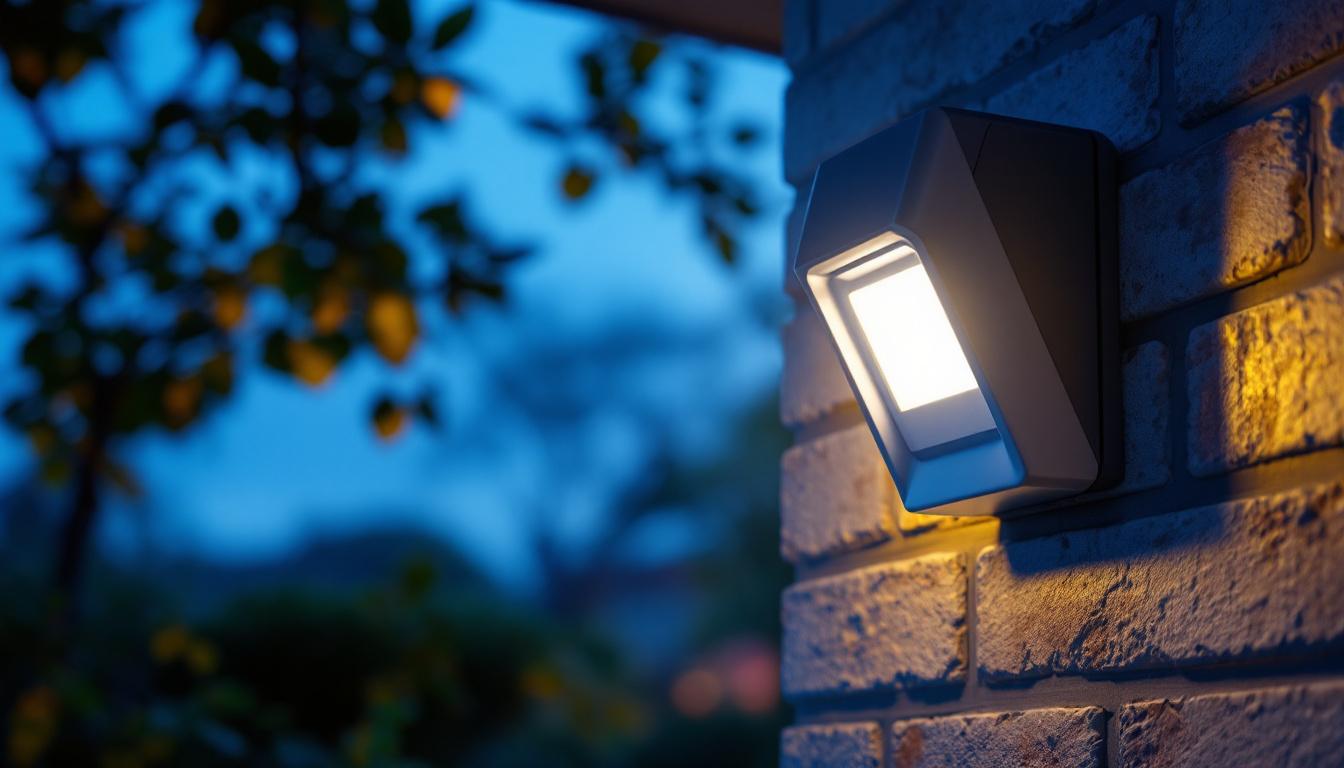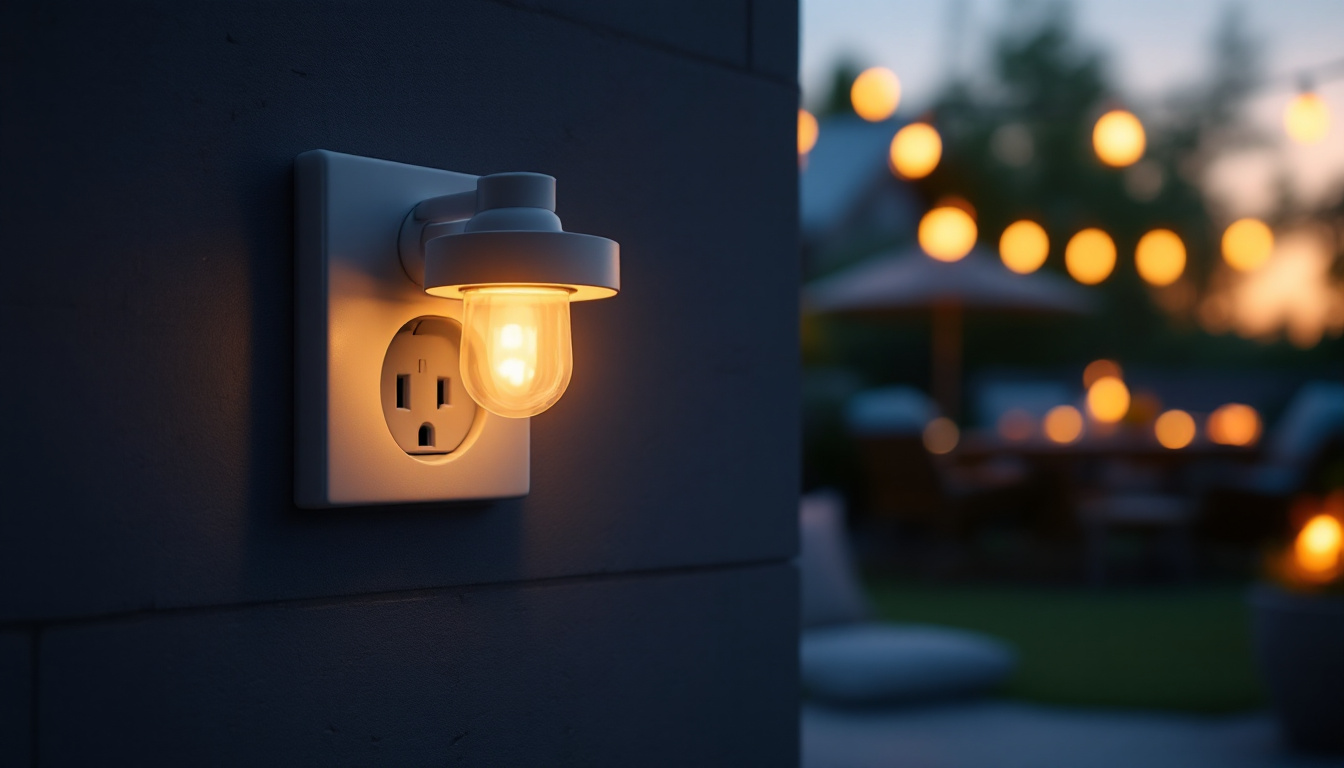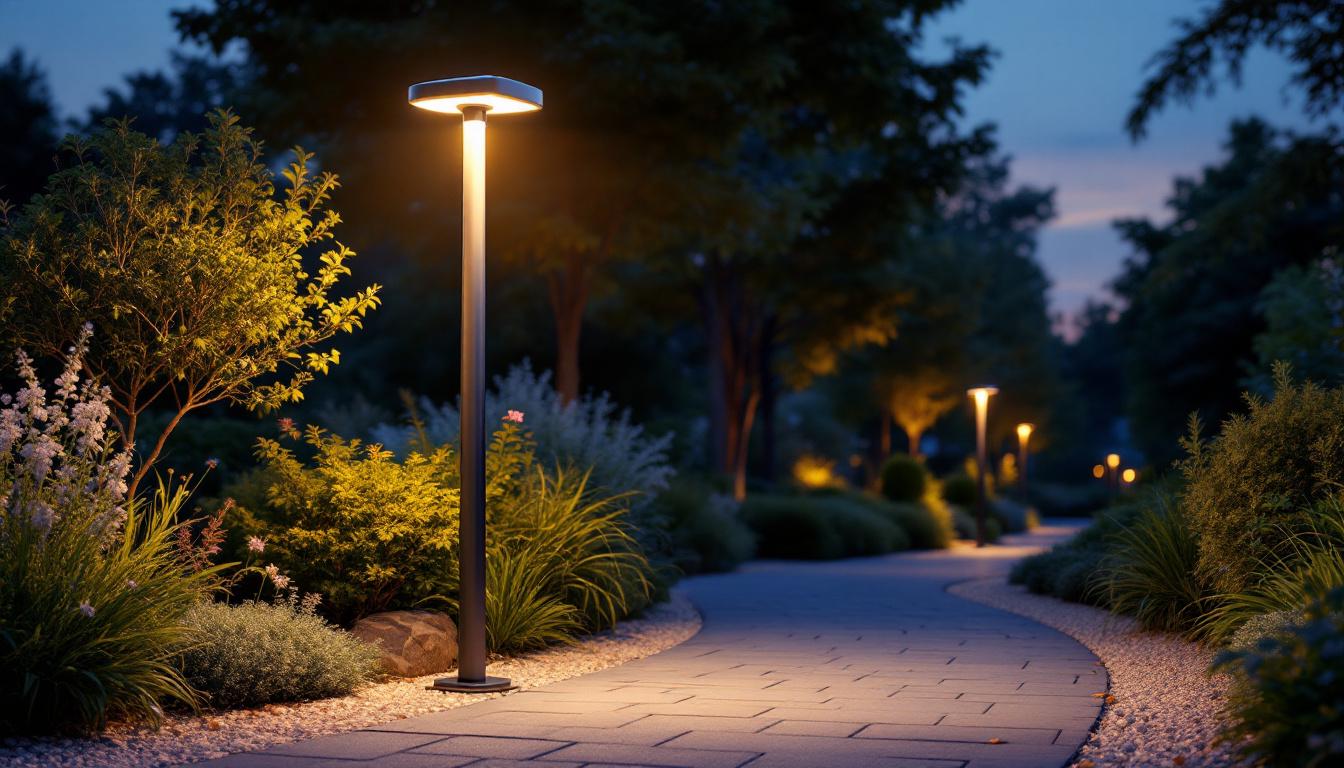
In the realm of modern lighting solutions, motion detector light fixtures have emerged as a pivotal innovation, combining functionality with energy efficiency. For lighting contractors, understanding the intricacies of these fixtures is essential not only for installation but also for advising clients on the best options for their specific needs. This article delves into the various aspects of motion detector light fixtures, including their types, installation processes, and the benefits they offer.
Motion detector lights utilize advanced technology to detect movement within a designated area. This technology is primarily based on two types of sensors: passive infrared (PIR) sensors and microwave sensors. Each type has its unique features and applications, making it crucial for contractors to understand their differences.
PIR sensors are the most common type used in motion detector light fixtures. They work by detecting the infrared radiation emitted by objects, particularly warm bodies like humans and animals. When a person enters the sensor’s field of view, the change in infrared radiation triggers the light to turn on.
One of the key advantages of PIR sensors is their energy efficiency. They only activate the light when movement is detected, which helps in conserving energy. However, they have limitations, such as a reduced detection range and sensitivity to environmental factors like temperature changes and obstacles. Additionally, PIR sensors are often favored for residential applications due to their reliability and cost-effectiveness. Homeowners can install these sensors in driveways, gardens, or near entryways to enhance security and deter potential intruders.
Microwave sensors operate on a different principle. They emit microwave pulses and measure the reflection of these waves to detect movement. Unlike PIR sensors, microwave sensors can penetrate through walls and other obstacles, making them more versatile in certain applications.
While they offer a broader detection range and can be more sensitive, microwave sensors may also lead to false triggers due to their ability to detect even minor movements. This characteristic makes them suitable for areas where constant movement is expected, such as parking lots or warehouses. Furthermore, microwave sensors are often used in commercial settings, where their ability to cover larger areas without being obstructed by physical barriers is invaluable. They can be integrated into sophisticated security systems, allowing for real-time monitoring and response to potential threats, thus providing an extra layer of safety and security for businesses.
Motion detector light fixtures come in various forms, each tailored to specific applications and environments. Understanding these types can help contractors recommend the most suitable options to their clients.
Wall-mounted motion detector lights are ideal for residential and commercial exteriors. They are often positioned near entryways, garages, and pathways to enhance security and visibility. These fixtures can be equipped with either PIR or microwave sensors, depending on the specific needs of the location.
When installing wall-mounted fixtures, it is essential to consider the height and angle of the sensor to ensure optimal coverage. Proper placement can significantly reduce blind spots and enhance the effectiveness of the lighting solution. Additionally, many modern wall-mounted fixtures come with adjustable sensitivity settings, allowing users to customize the detection range based on their specific environment. This feature can be particularly beneficial in areas with frequent animal movement, as it helps minimize false alarms while still providing reliable security.
Ceiling-mounted motion detector lights are commonly used in indoor settings, such as hallways, stairwells, and large open spaces. These fixtures can cover a wider area and are less likely to be obstructed by furniture or other objects.
Contractors should pay attention to the mounting height and the sensor’s range when installing ceiling-mounted fixtures. In spaces with high ceilings, it may be necessary to use fixtures with a more extensive detection range to ensure adequate coverage. Furthermore, some ceiling-mounted models are designed with integrated LED technology, which not only provides brighter illumination but also offers energy efficiency. This can lead to significant cost savings over time, making them an attractive option for both residential and commercial applications.
Portable motion detector lights offer flexibility and convenience, making them suitable for temporary installations or areas where permanent fixtures are not feasible. These lights are often battery-operated and can be easily moved to different locations as needed.
While portable solutions are convenient, they may not provide the same level of security or illumination as fixed installations. Contractors should discuss the pros and cons of portable options with clients, especially in terms of long-term effectiveness and maintenance. Moreover, many portable models now feature solar power capabilities, allowing them to recharge during the day and operate without the need for external power sources. This innovation not only enhances their usability in remote areas but also promotes sustainability, appealing to environmentally conscious consumers.
Proper installation of motion detector light fixtures is crucial for optimal performance. Lighting contractors must adhere to best practices to ensure that the fixtures function as intended and meet safety standards.
Before installation, conducting a thorough site assessment is essential. This involves evaluating the area where the fixtures will be installed, identifying potential obstacles, and determining the best locations for sensor coverage. Factors such as foot traffic patterns, existing lighting, and environmental conditions should be taken into account.
A well-planned installation not only enhances the effectiveness of the motion detectors but also minimizes the risk of false triggers and energy waste.
When installing motion detector light fixtures, proper wiring is critical. Contractors should ensure that the electrical connections comply with local codes and regulations. Additionally, using the correct gauge of wire and securing connections can prevent potential hazards.
It is also advisable to install fixtures on dedicated circuits, especially for larger installations, to avoid overloading existing circuits and to ensure reliable operation.
Once the fixtures are installed, thorough testing and calibration are necessary. This process involves checking the sensor’s range, sensitivity, and response time. Adjustments may be needed to optimize performance based on the specific environment.
Contractors should encourage clients to test the fixtures at different times of the day and under varying conditions to ensure they are functioning as expected. Proper calibration can significantly enhance the user experience and satisfaction.
Motion detector light fixtures offer numerous benefits, making them an attractive option for both residential and commercial applications. Understanding these advantages can help contractors effectively communicate their value to clients.
One of the primary benefits of motion detector lights is the enhanced security they provide. By automatically illuminating areas when movement is detected, these fixtures can deter potential intruders and increase safety for occupants. This feature is particularly valuable for homes and businesses located in high-crime areas.
Additionally, the presence of motion-activated lighting can create a sense of safety, encouraging individuals to use outdoor spaces even after dark.
Energy efficiency is another significant advantage of motion detector light fixtures. Since they only activate when needed, they can substantially reduce energy consumption compared to traditional lighting systems. This not only lowers electricity bills but also contributes to environmental sustainability.
For clients concerned about energy usage, highlighting the long-term savings associated with motion detector lights can be a persuasive selling point.
Motion detector lights offer unparalleled convenience. They eliminate the need for manual operation, automatically turning on and off based on movement. This feature is especially beneficial for individuals with mobility challenges or those carrying items who may find it difficult to operate traditional switches.
Moreover, the automation provided by motion detectors can enhance the overall user experience, making spaces more accessible and user-friendly.
While motion detector light fixtures provide numerous benefits, they are not without challenges. Lighting contractors should be prepared to address common issues that may arise during installation or operation.
False triggers can be a significant concern with motion detector lights, particularly in areas with high levels of activity or environmental factors that may interfere with the sensors. Wind, animals, and even passing vehicles can cause the lights to activate unnecessarily.
To mitigate this issue, contractors can recommend fixtures with adjustable sensitivity settings or suggest strategic placement that minimizes exposure to potential triggers. Educating clients about the importance of proper calibration can also help reduce false activations.
Another challenge is the limited detection range of some motion sensors. Depending on the type of sensor and the environment, certain areas may not be adequately covered, leading to dark spots.
Contractors can address this by conducting a thorough site assessment and recommending fixtures with appropriate detection ranges for the specific application. In some cases, installing multiple fixtures may be necessary to achieve comprehensive coverage.
Regular maintenance is essential to ensure the continued effectiveness of motion detector light fixtures. Dust and debris can accumulate on sensors, reducing their sensitivity and performance.
Contractors should advise clients on the importance of periodic cleaning and inspections. Providing a maintenance schedule can help clients keep their systems in optimal condition, ensuring long-lasting performance.
Motion detector light fixtures represent a significant advancement in lighting technology, offering enhanced security, energy efficiency, and convenience. For lighting contractors, understanding the various types, installation best practices, and common challenges associated with these fixtures is crucial for delivering high-quality service to clients.
By staying informed about the latest developments in motion detector technology and effectively communicating their benefits, contractors can position themselves as trusted experts in the field. As the demand for smart and efficient lighting solutions continues to grow, mastering the intricacies of motion detector light fixtures will be an invaluable asset for any lighting contractor.
Ready to elevate your lighting projects with the advanced technology of motion detector light fixtures? Look no further than LumenWholesale for all your lighting needs. We provide contractors with high-quality, specification-grade lighting products at unbeatable wholesale prices. Our extensive selection is designed to meet the highest industry standards, ensuring you deliver reliable, high-performance lighting solutions to your clients. With LumenWholesale, you can enjoy the convenience of bulk buying with free shipping, ensuring you get premium lighting at the best value — without hidden fees or compromises. Don’t miss out on the perfect blend of quality, affordability, and convenience. Wholesale Lighting at the Best Value is just a click away.

Discover how outdoor socket lights can revolutionize your home’s energy efficiency.

Discover why the MR16 bulb is a game-changer for lighting contractors.

Discover how the innovative 5’10 Wall technique can transform your lighting designs, enhancing ambiance and functionality in any space.

Discover how solar powered outdoor lamp posts simplify lighting projects for contractors, offering eco-friendly, cost-effective, and reliable illumination solutions—boost your efficiency today!.